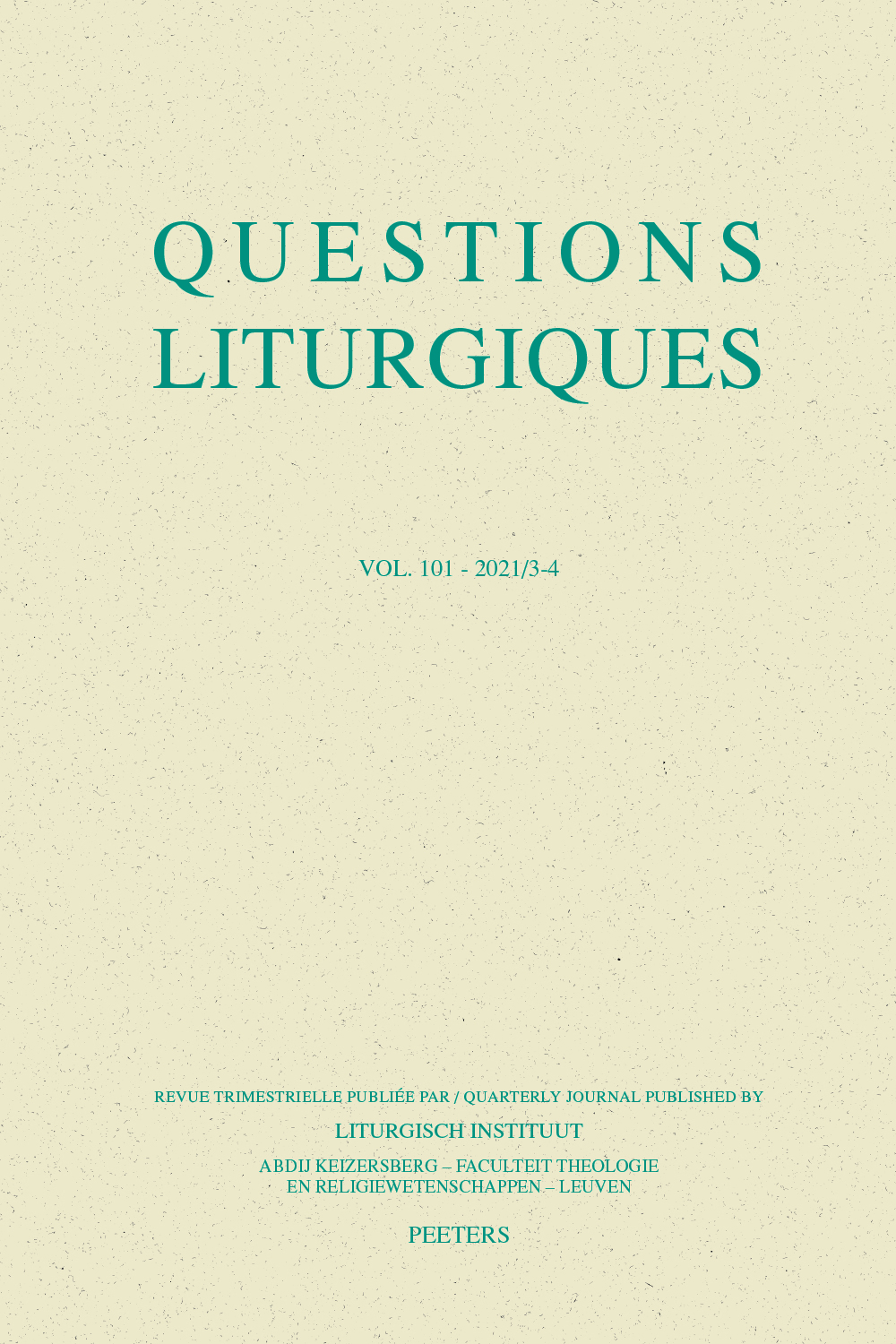 previous article in this issue previous article in this issue | next article in this issue  |

Preview first page |
Document Details : Title: Κοινωνία in 1 Corinthians 10:16 and Anglican Eucharistic Liturgies Author(s): DOUGLAS, Brian Journal: Questions Liturgiques/Studies in Liturgy Volume: 100 Issue: 1-2 Date: 2020 Pages: 189-210 DOI: 10.2143/QL.100.1.3287694 Abstract : Kοινωνία (koinonia) is used by Paul in 1 Cor 10:16-17 in both an ecclesial sense with a participatory relationship between the receiver of communion and the body and blood of Christ where there is partnership and fellowship with other Christians and a sacramental sense with a participatory relationship between both the bread and wine of the Eucharist and the body and blood of Christ where the received has a part of Christ. Some Anglican liturgies make primary use of the participatory relationship between the body and blood of Christ and the elements of bread with the subsequent and secondary use of the participatory relationship between the body and blood of Christ and the receiver. Other Anglican liturgies make primary use of the participatory relationship between the body and blood of Christ and the receiver with limited or no secondary use of a participatory relationship between the elements and the body and blood of Christ. The theological underpinnings of these uses are explored in relation to Anglican eucharistic liturgies. The fuller use of biblical and sacramental theology in Anglican eucharistic liturgies is recommended, noting that maintaining Reformation agendas focussing on ecclesial participatory relationship alone is problematic, in view of the modern liturgical consensus from the later twentieth century onwards. Kοινωνία (koinonia) est utilisé par Paul en 1 Cor 10,16-17 à la fois dans un sens ecclésial avec une relation participative entre le receveur de la communion et le corps et le sang du Christ où il y a partenariat et communion avec les autres chrétiens et un sens sacramentel avec une relation participative entre le pain et le vin de l’Eucharistie et le corps et le sang du Christ où le reçu porte une partie du Christ. Certaines liturgies anglicanes utilisent en premier lieu la relation participative entre le corps et le sang du Christ et les éléments du pain, puis en second lieu la relation participative entre le corps et le sang du Christ et le receveur. D’autres liturgies anglicanes se servent principalement de la relation participative entre le corps et le sang du Christ et le receveur, avec une utilisation secondaire limitée ou nulle de la relation participative entre les éléments et le corps et le sang du Christ. Les fondements théologiques de ces usages sont explorés par rapport aux liturgies eucharistiques anglicanes. L’utilisation plus complète de la théologie biblique et sacramentelle dans les liturgies eucharistiques anglicanes est recommandée, en notant que le maintien des programmes de la Réforme axés sur la seule relation participative ecclésiale est problématique, au regard du consensus liturgique moderne à partir de la fin du XXe siècle. |
|


